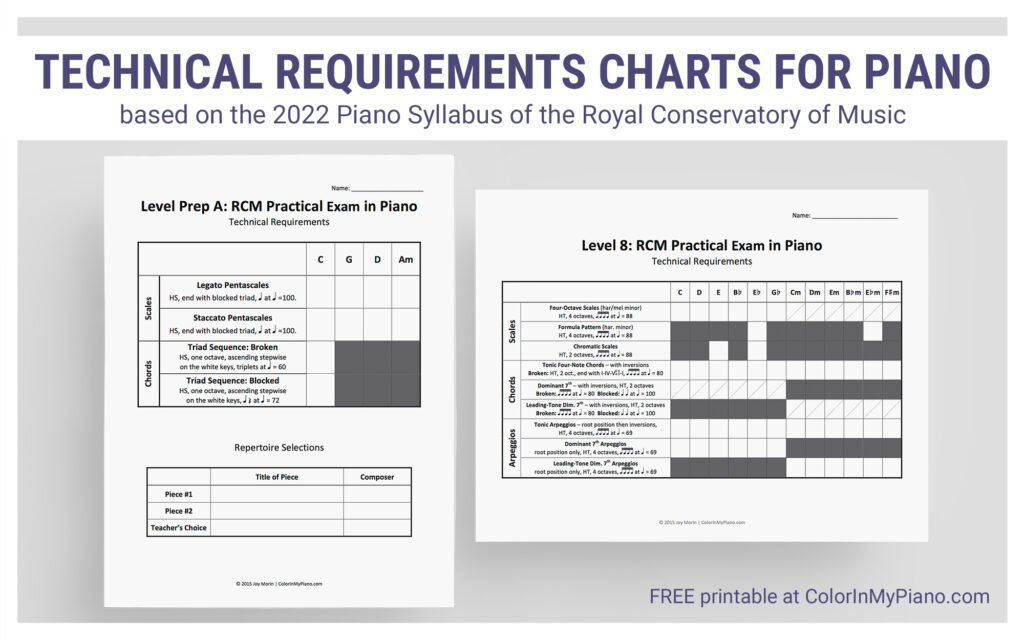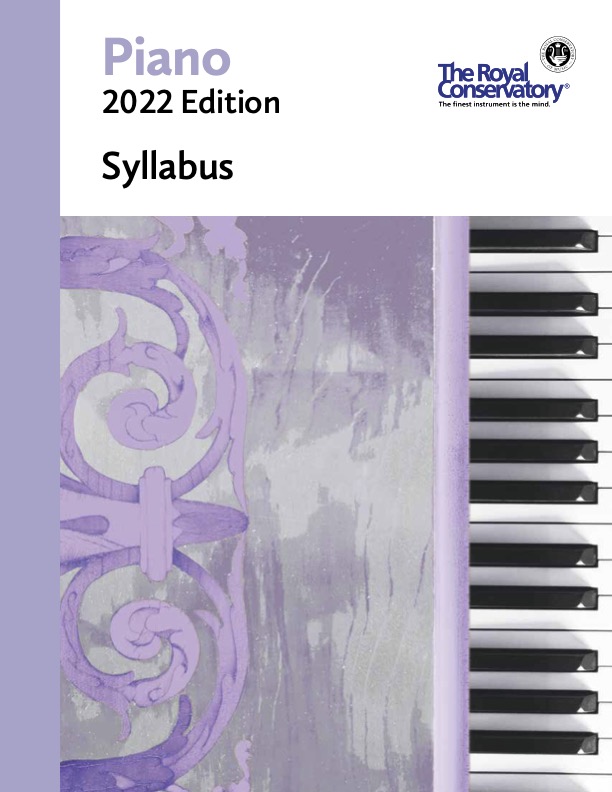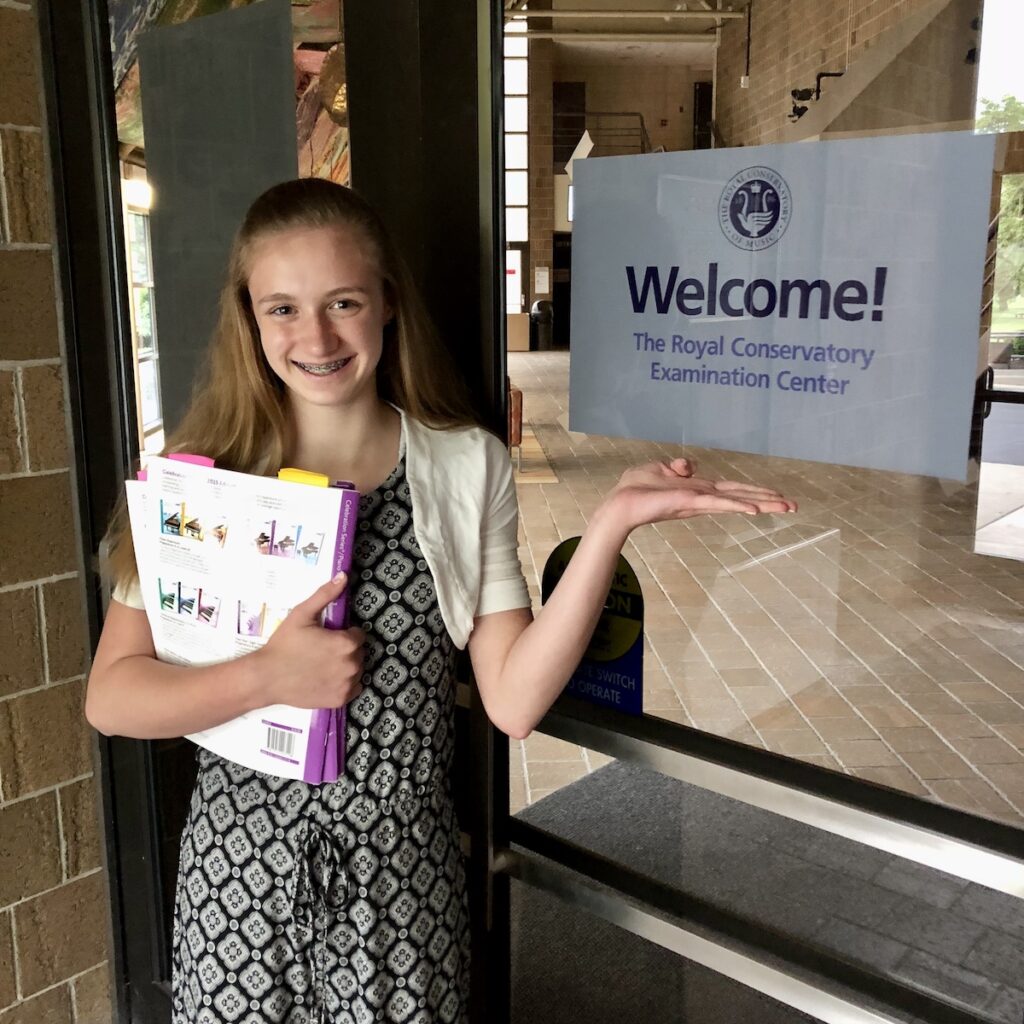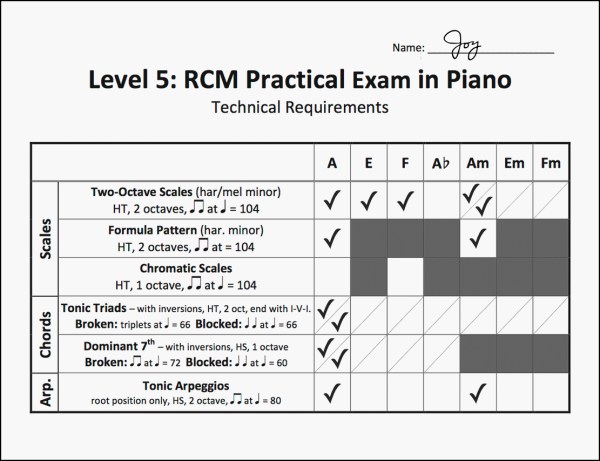
Have you heard? The Royal Conservatory of Music (RCM) has recently released the newly revised 2022 Piano Syllabus for their practical examinations. They are also releasing new editions of the wonderful Celebration Series piano literature collection (available soon). What exciting news for piano teachers!

Not familiar with RCM? Each year, I tend to enter a handful of piano students to take exam assessments through RCM, an excellent program originating in Canada and gradually becoming more popular in the United States. There are exam centers located in many major cities, as well as an option for an online exams via Zoom. I appreciate the thoroughness of the assessments, which require students to demonstrate musicianship skills (sight-reading, ear training, rhythm exercises, etc.) and perform a set of pieces ranging in musical styles. The levels outlined in the syllabus (a great teaching resource for any teacher — find the free PDF here) are soundly structured and have been refined over time by dedicated pedagogues in our field. RCM is also known for the quality and consistency of adjudication scoring. RCM is not a competition; it is a standard that allows students and parents to better understand and track progress during music study.

Every seven years, RCM revises the piano syllabus to incorporate new repertoire, eliminate repertoire that is no longer readily available, and refine the aural and musicianship requirements. When it’s a revision year, RCM teachers are always seeking to learn about the updates and changes compared to the previous syllabus.
RCM practical exams include technical requirements for each level consisting of certain scales, arpeggios, and chords that must be performed for the adjudicator. These technical requirements are described in the syllabus and are also notated out in the available RCM technique books. I tend NOT to purchase the technique books, because I find that students learn better than when the technical exercises been learned by rote and memorized from day 1. But it can be cumbersome to describe the RCM technical requirements on students’ assignment sheets each week — especially if you expect students to review all previous material.
Enter my technique charts. I’ve been making these since the 2008 RCM syllabus, and I’ve gotten a lot of great feedback from other piano teachers who have found them helpful over the years!

I find these charts help ensure that my students are learning and reviewing their exercises from week to week. Even if you have no intention of sending students to RCM assessments, you might find these charts useful.
From the 2008 to 2015 syllabi, I recall many technical requirement changes made. However, in comparing 2015 to 2022, I found that there were not many changes made at all. Nevertheless, I wanted to revise my charts to perfectly match the new 2022 syllabus. I’m pleased to announce the new charts for the 2022 RCM Piano Syllabus are finished and available below.
I keep the PDF of these technique charts on my computer desktop and also uploaded to my iPad (I use an app called GoodNotes, but any similar app of your choice will work). This makes it easy to print out charts for students. I like to tape each student’s chart inside the front cover of one of their books. I assign items from the chart each week by outlining certain boxes in pencil or marker. At the next lesson, students demonstrate whether they’ve mastered each skill. Mastered items on the chart get a checkmark or a sticker. These charts makes it easy to track progress!

Special thanks goes to fellow piano teacher Amy Hall for helping to proofread the charts against the 2022 syllabus.
Download below, or visit the Printables > Other Resources page and scroll down to “2022 RCM Technical Requirements Charts for Piano”.
 2022 RCM Technical Requirements Charts for Piano (1.2 MiB, 17,812 hits)
2022 RCM Technical Requirements Charts for Piano (1.2 MiB, 17,812 hits)
Hope you enjoy!


Thank you Joy for the new RCM Technical charts! I use the 2015 charts with every student. So satisfying to color in those boxes!!!!
You’re welcome, Kathryn! I agree, it’s very satisfying filling in the boxes on the charts! 🙂
So very generous of you to share these, Joy – thanks!
Anna
You’re most welcome, Anna!
Thanks, Joy, very generous of you! I’m in Canada, and have made similar summaries for my students to use (no check boxes, though). Just a very small note: in Canada, we say “solid” rather than “blocked” for unbroken chords…would you consider making an alternative version?
I am in Canada too and I think it’s good for students to learn both terms myself.
Yes, the syllabus uses both terms: “solid/blocked.” For the purpose of saving space on the charts, I opted to use only “blocked.”
If there are enough requests from teachers, I would consider making another version of the charts using “solid”.
I am in Canada too, and the Royal Conservatory of Music changed the wording years ago, so I’ve also tried to get on board by un-learning the term ‘solid’. In exams, the examiner will ask for blocked chords, so the student must be familiar with this term.
Love this!
Thanks so much for redoing these. They are very helpful.
You’re welcome, Colleen! Glad you can use them!
Thanks Joy! I have a question…if your students are not doing exams, do you stick with the technical/theory progression in the method(Piano Safari or Faber) or do you combine?
I don’t generally follow the technique/theory progression of the method series I might be using with a student; instead I tend to do a bit of my own thing! For example, I don’t like teaching one-octave scales; instead, my students learn two-octave scales (hands separately) because then they truly understand the way the fingering works. I don’t see much benefit to taking the time to learn one-octave scales.
Another example: Rather than follow the keys the way they are typically introduced in a given piano method series, I like to have students work around the entire circle of 5ths — first clockwise through all seven sharps and then counterclockwise through all seven flats. For me, this leads to a very good understanding of how the keys and key signatures work.
So, we do our own thing! And then if students are doing RCM exams, I provide them with the appropriate chart for their level and we make sure they can play everything from the chart. Generally, I try to make sure students’ technique skills are ahead of what the exam requires.
Thanks for the question, Julie!
Thanks for that detailed response. This is very helpful!
Julie
Hi Joy,
Thanks so much for sharing this resource! I look forward to using it with my students.
Just so you know, only the 2015 repertoire and etudes books were updated this year, 2022. I’m not sure how they deal with the overlap for the syllabus when a new edition of the technical requirements and 4 star (ear training & sight reading) books comes out. That’s a good question to ask RCM.
Hi Juli! Correct, there are new editions for the Celebration Series repertoire books, etudes books, and syllabus. I have my doubts that they will update the Celebrate Theory books, Technical Requirements books, or the 4 Star Sight Reading and Ear Training books this time around. But I could be wrong! 🙂
Have you ever had virtual students? What do you do to get them excited about piano? What incentive? What games?…
Thanks Joy, I’m going to share this resource with my readers. So glad that each day there are more and more resources and materials that help newcomers to learn piano
Thank you for providing this, Joy! My students actually look forward to completing their entire technique sheet because I add an incentive: a full size treat of their choice! Like you, I generally have my students learn more than required for each level, going about the circle of fifths as you do. So smart, and it makes much more sense in their minds!
Thank you so much for this, Joy! I super appreciate this to help me streamline preparing for my students 🙂
You’re welcome, Belinda!